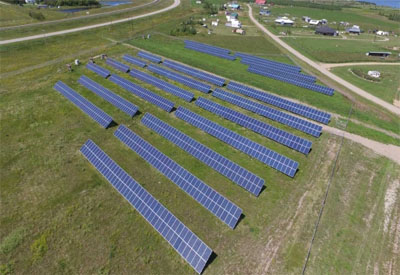Solar Power Proponents Push SaskPower to Embrace Solar Potential

October 19, 2017
Solar producers say the future is bright in the land of living skies, if only Saskatchewan’s government-owned electrical utility would take greater advantage of the opportunity.
“We would love to expand,” says Bill Walton, president of 2B Green Solar Power. “We thought we were going to be able to. We had meetings with SaskPower last spring and nothing has happened.”
The sun shined on Walton as he stood in front of the largest solar farm in the province: 1,600 solar panels that he and his associates have set up outside of the town of Craik.
“It’s just an excellent area to do solar in,” Walton said. “Endless, endless sunny days.”
Together the solar panels here can generate 400 kilowatts of power, but Walton said that is just a fraction of what is possible, if SaskPower would take more electricity.
SaskPower’s Small Power Producers Program allows applicants to generate up to 100 kilowatts of electricity to offset what they would otherwise purchase from the Crown utility or to sell to SaskPower.
The government’s power company has pledged to get half its electricity from renewable sources by 2030, but it stopped taking applications from small power producers last month after it hit a self-imposed cap of 7.5 MW generated through the program over all.
Brian Ketcheson, vice-president of distribution and customer services with SaskPower, said the program has been put on pause while the company reviews it.
He said in recent years, there has been a growing demand by small power producers to participate in power generation as the cost of inputs goes down and the cost of electricity goes up.
“Customers wanting to participate is certainly going to be a bigger and bigger portion of the generation that we have on our system, so we need the programs that kind of match up that demand,” Ketcheson said.
He said the key for the SaskPower is balancing the interest from those who want to sell power back to the company, with those of customers who want safe, reliable electricity at a reasonable cost.
Ketcheson said SaskPower expects to unveil its new rules for small power producers early in the new year.










![Guide to the Canadian Electrical Code, Part 1[i], 26th Edition – A Road Map: Section 10 – Grounding and Bonding](https://electricalindustry.ca/wp-content/uploads/2022/11/Guide-CE-Code-2.png)





